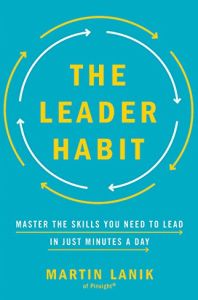Rejoignez getAbstract pour lire le résumé !

Rejoignez getAbstract pour lire le résumé !
Martin Lanik
The Leader Habit
Master the Skills You Need to Lead in Just Minutes a Day
AMACOM, 2018
Aperçu
Good leaders have good habits. If you develop the right ones, you can become a better leader.
Recommendation
Leadership is a collection of habits. If you learn to develop the right ones, you can become a better leader. To that end, leadership development expert Martin Lanik details his “Leader Habit Formula,” which guides you in linking leadership actions to specific cues, or “microbehaviors,” until they become habitual. Lanik lists a long menu of cues and behaviors, so diligent and patient readers will gain the most from his method. He asserts that reading leadership books isn’t a productive way to learn to lead, but he sells himself – and the genre – short, as readers will discover to their pleasure.
Summary
About the Author
Martin Lanik is CEO of Pinsight, a consultancy that has worked on leadership development solutions with people in 30 countries. You can take Lanik’s free Leader Habit Quiz at www.leaderhabit.com.

























Comment on this summary